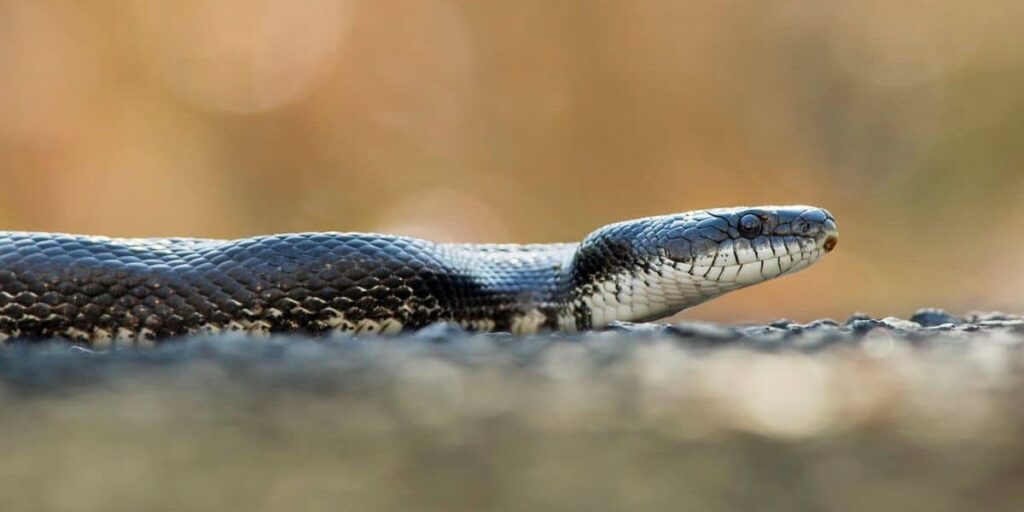If you’ve spotted a black snake slithering across your yard or near a trail in Texas, there’s no need to panic. Black snakes are common throughout the Lone Star State, and most of them are non-venomous, shy, and incredibly beneficial to the local ecosystem.
In fact, these slithery visitors might be doing you a favor.
Common Black Snakes Found in Texas
Texas is home to a variety of black-colored snakes, but here are the most frequently encountered species:
1. Texas Rat Snake
- Color: Black with faint blotches or patterning
- Length: Up to 6 feet
- Temperament: Non-aggressive; may hiss but rarely bites
- Benefit: Excellent at controlling rodent populations
2. Western Coachwhip (Black Phase)
- Color: Solid black or dark brown
- Length: Up to 8 feet
- Speed: Extremely fast
- Benefit: Eats lizards, birds, rodents, and other snakes (even venomous ones)
3. Black Racer
- Color: Glossy black with a white chin
- Length: 3 to 5 feet
- Behavior: Quick and agile; usually flees when spotted
- Benefit: Helps reduce insect and rodent populations
4. Eastern Indigo Snake (Rare in Texas)
- Color: Deep bluish-black sheen
- Status: Federally protected
- Benefit: Known to consume venomous snakes like rattlesnakes
Are Black Snakes Dangerous?
In general, black snakes in Texas are non-venomous and pose no threat to humans or pets. While some may mimic the behavior of venomous snakes—like shaking their tail or flattening their heads—they are mostly bluffing to scare off predators.
Most black snakes would rather flee than fight. Bites are extremely rare and usually occur only if the snake is cornered or handled.
Read Also: Spotting Black Snakes in Florida? Here’s Why They’re Beneficial
Why Black Snakes Are Beneficial
Black snakes play a key role in maintaining balance in the environment:
- Natural Pest Control: They eat mice, rats, moles, and insects — reducing the need for chemical pesticides.
- Snake Population Control: Some black snakes feed on venomous snakes like copperheads and rattlesnakes.
- Pollution-Free Solution: Unlike traps or poisons, snakes naturally manage pests without harming the environment.
By keeping their population intact, you help reduce pests around your home and garden.
What To Do If You See One
If you come across a black snake:
- Leave it alone: Most snakes will move away on their own.
- Don’t try to kill it: Killing non-venomous snakes is not only harmful to the ecosystem but may also be illegal in some counties.
- Secure your home: Seal cracks and holes to prevent snakes from getting indoors.
- Call a professional: If a snake is inside your home or in a high-traffic area, contact a local wildlife control expert.
Final Thoughts
Black snakes in Texas may look intimidating, but they are largely harmless and play an important part in keeping ecosystems healthy and pest populations under control. If you spot one, consider it a sign that nature is doing its job.




More Stories
Spotting Black Snakes in Texas? Here’s Why They’re Beneficial
Spotting Black Snakes in Texas? Here’s Why They’re Beneficial
Spotting Black Snakes in Texas? Here’s Why They’re Beneficial